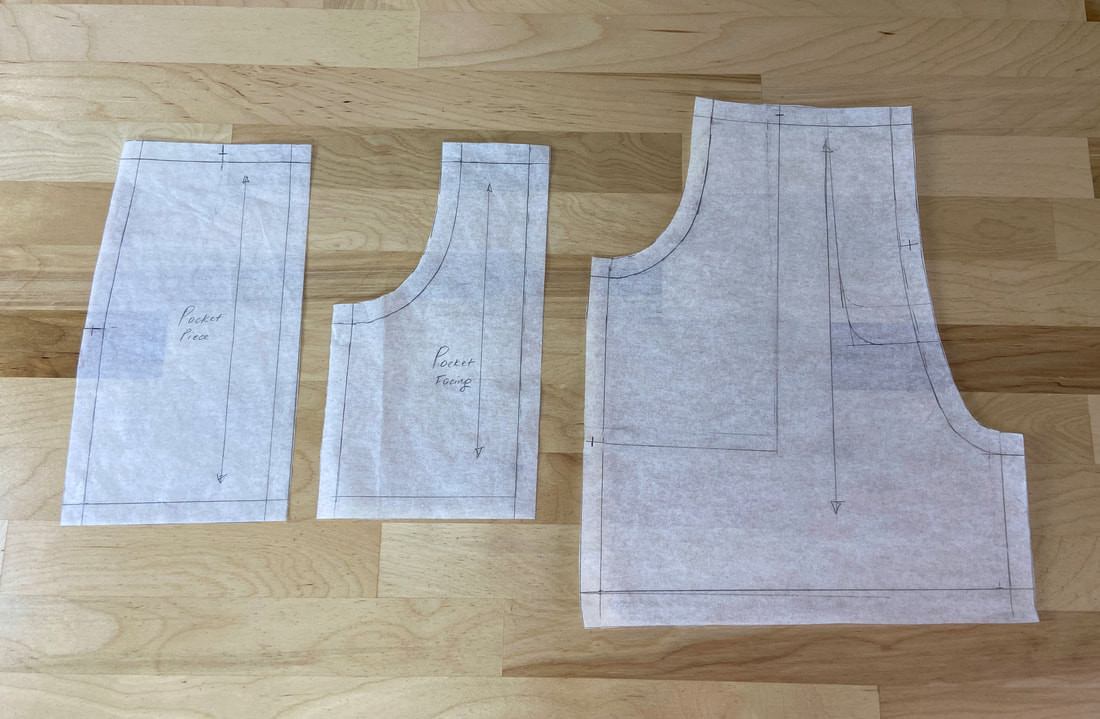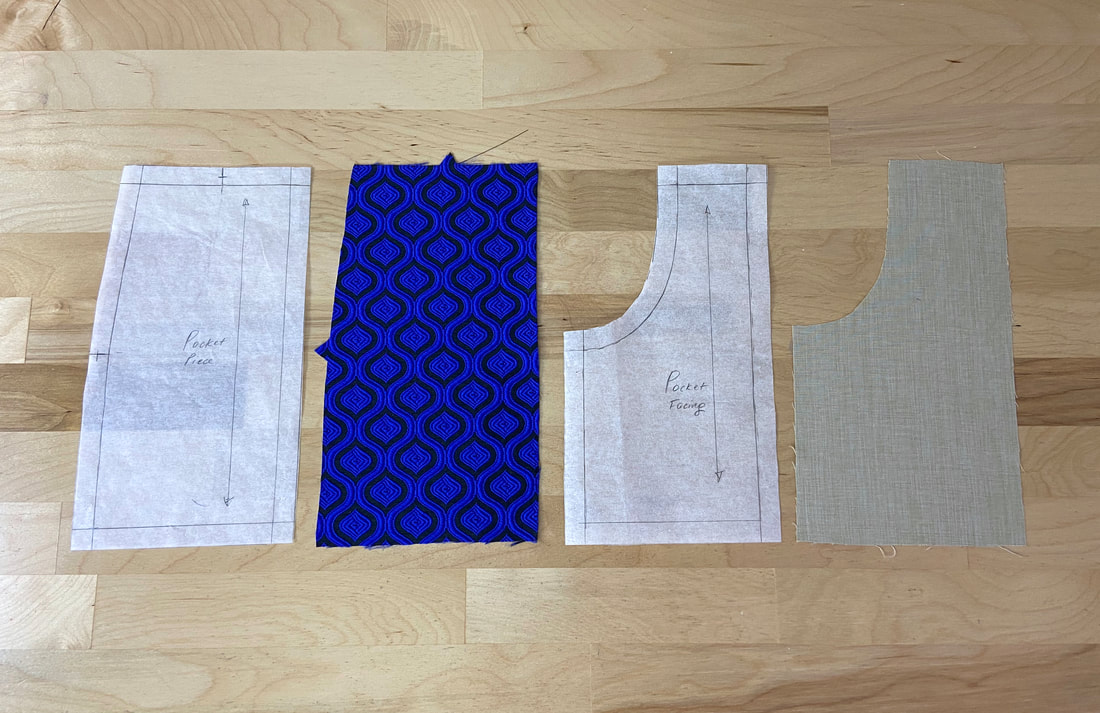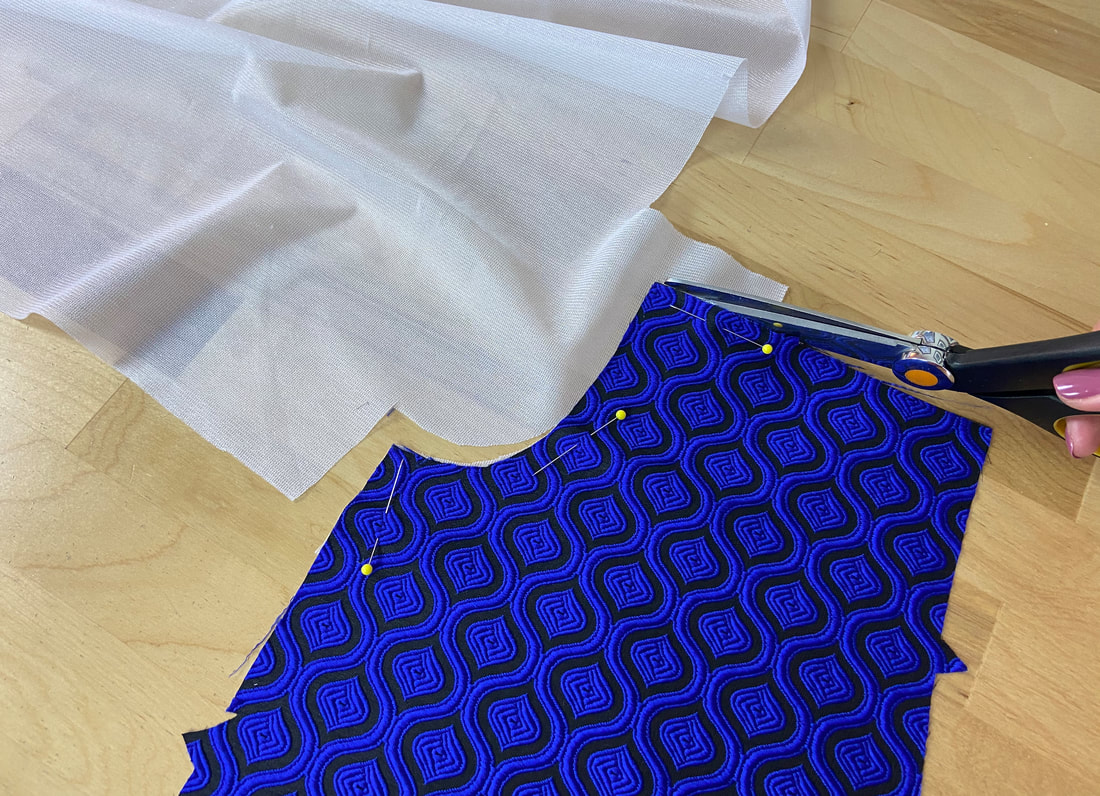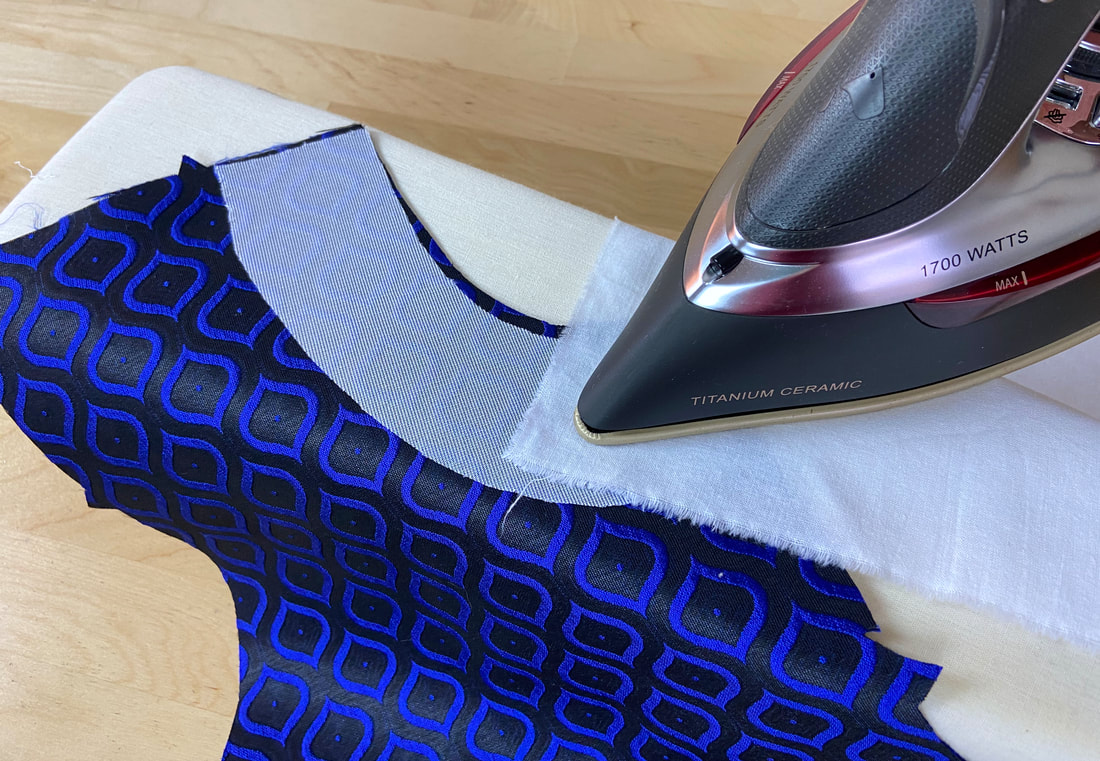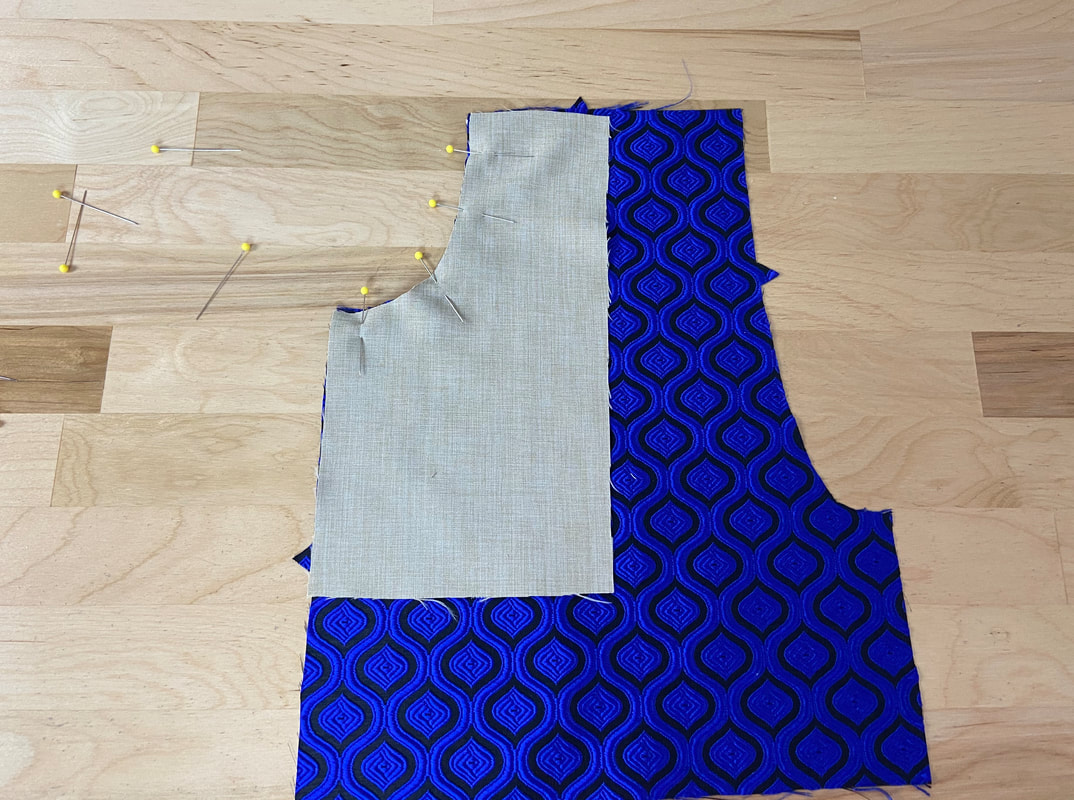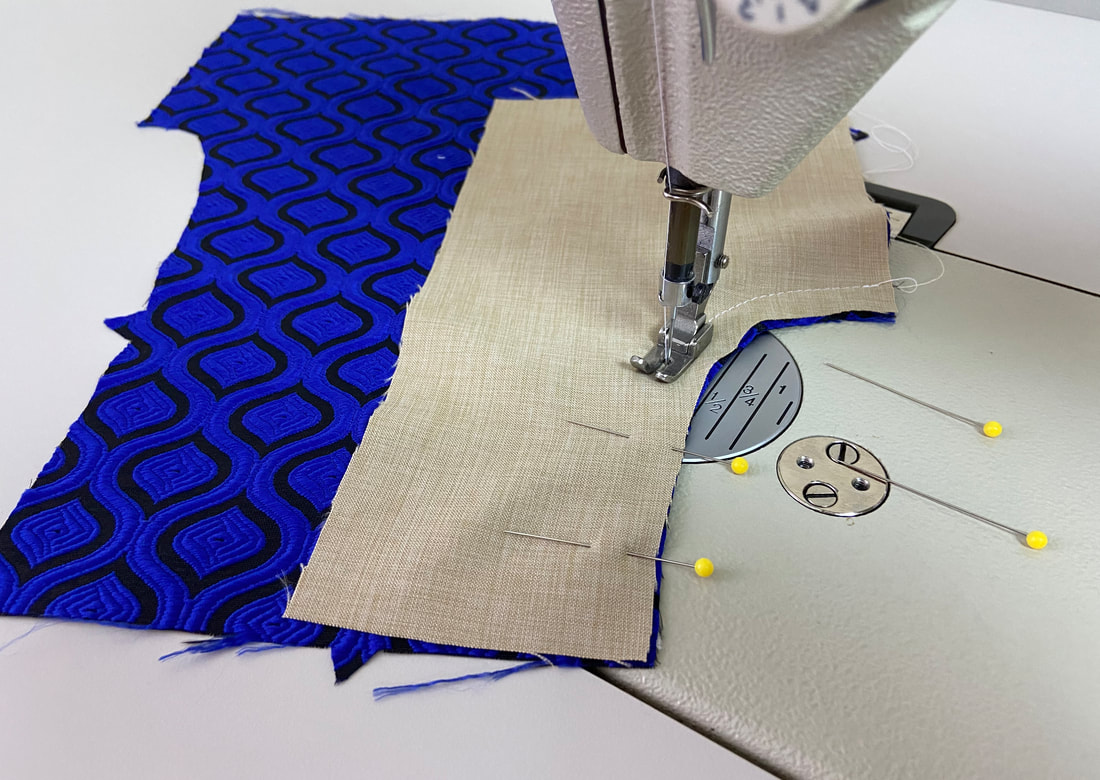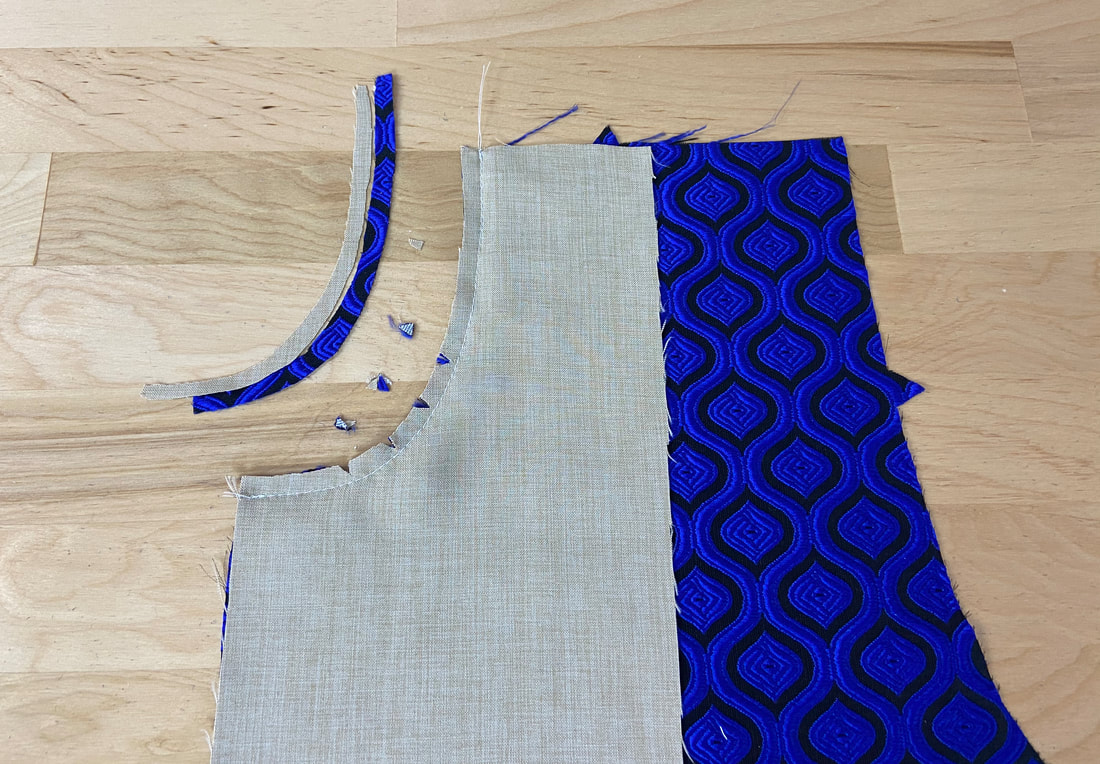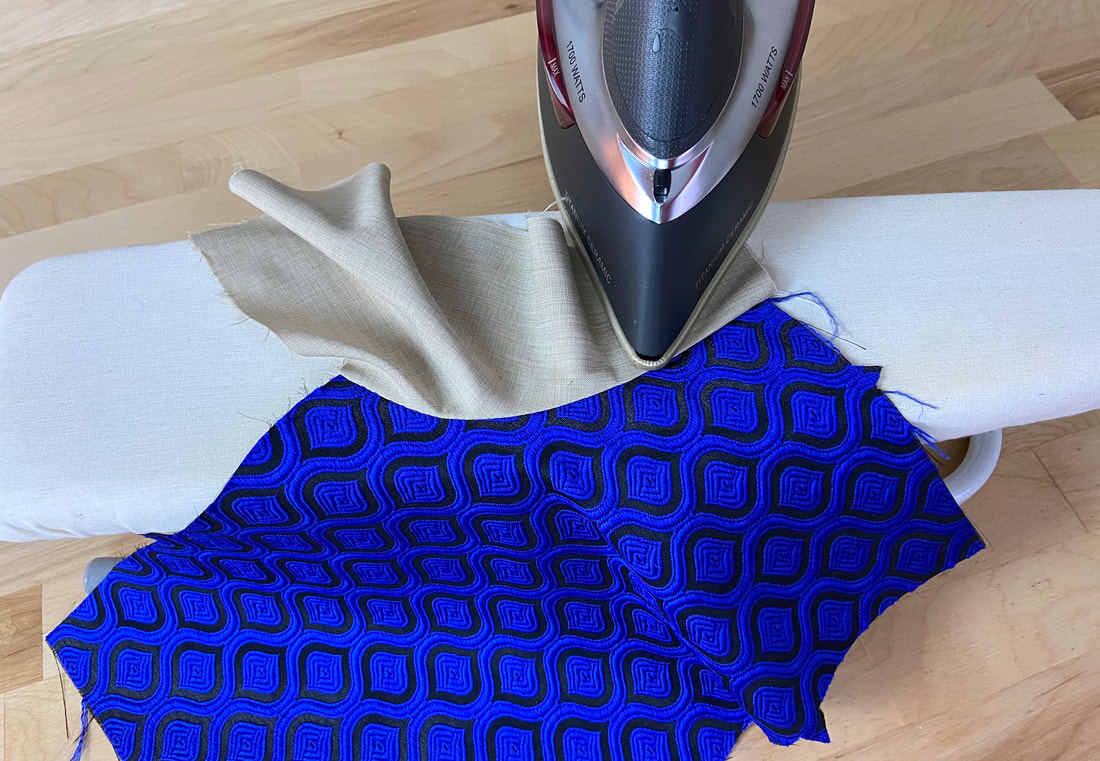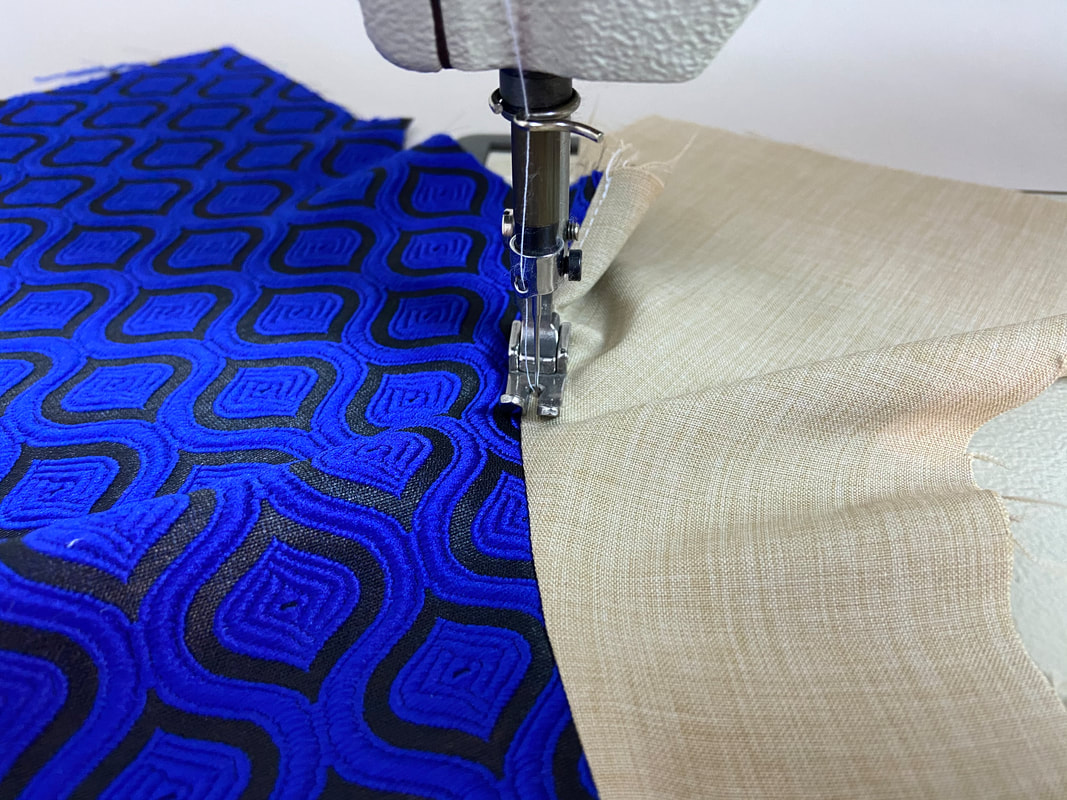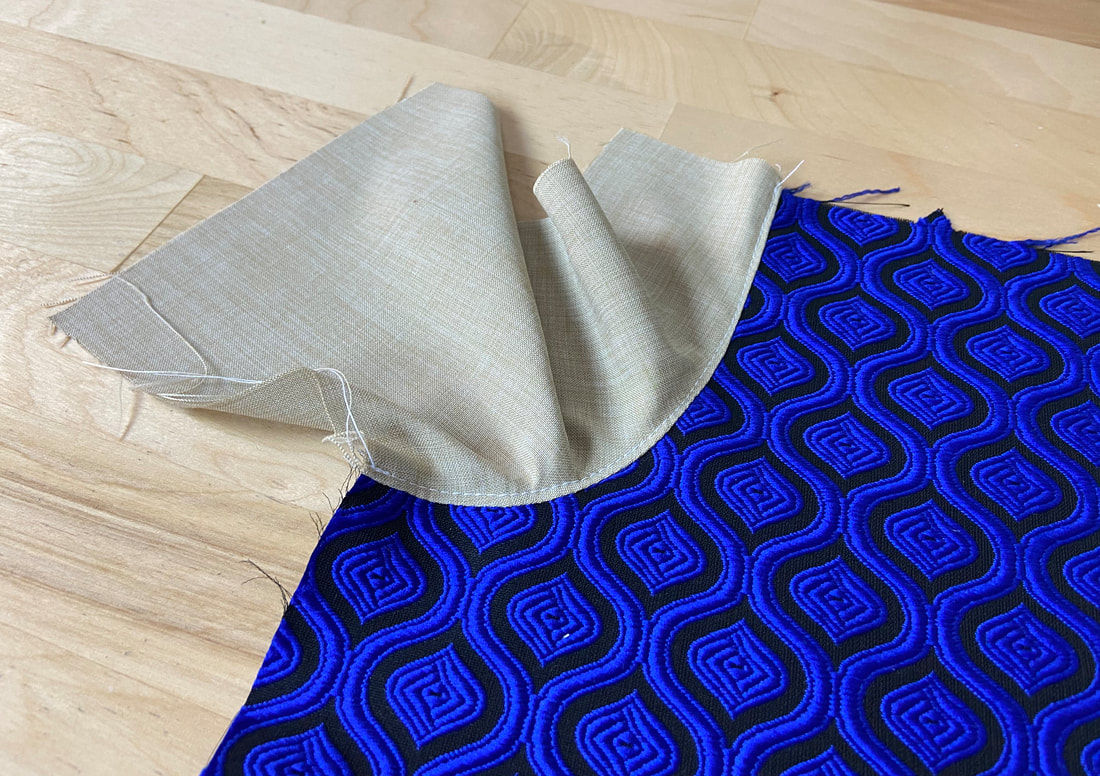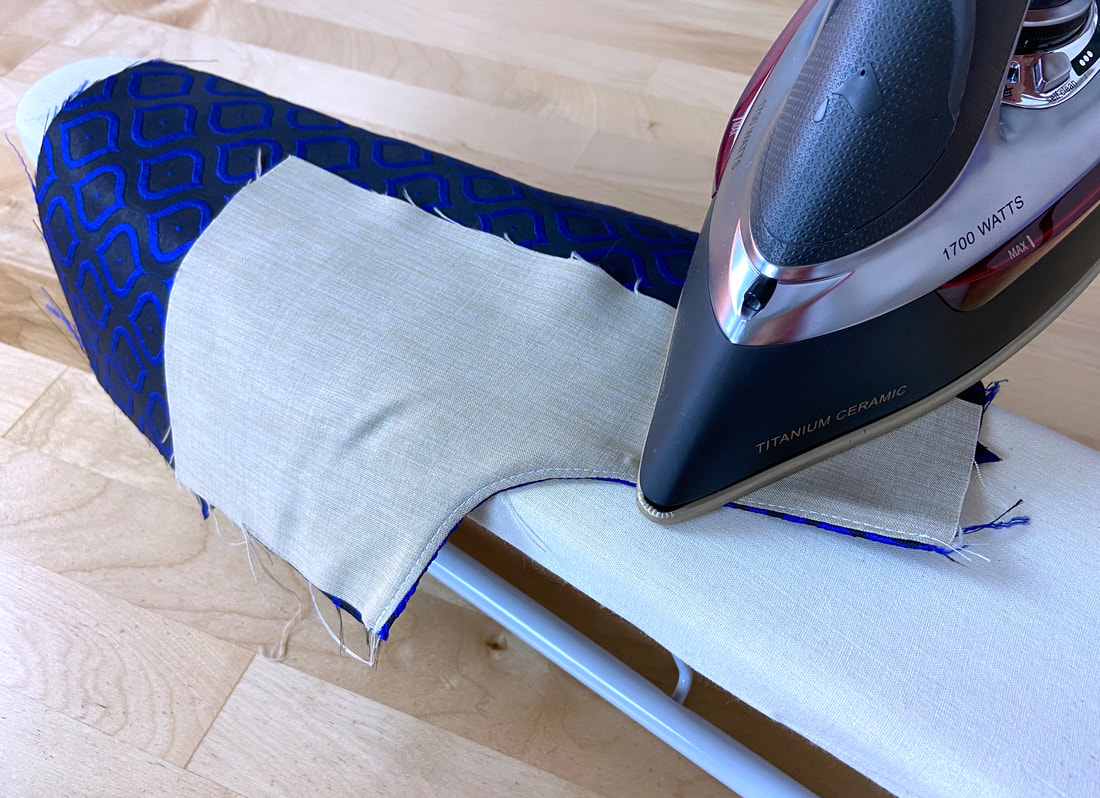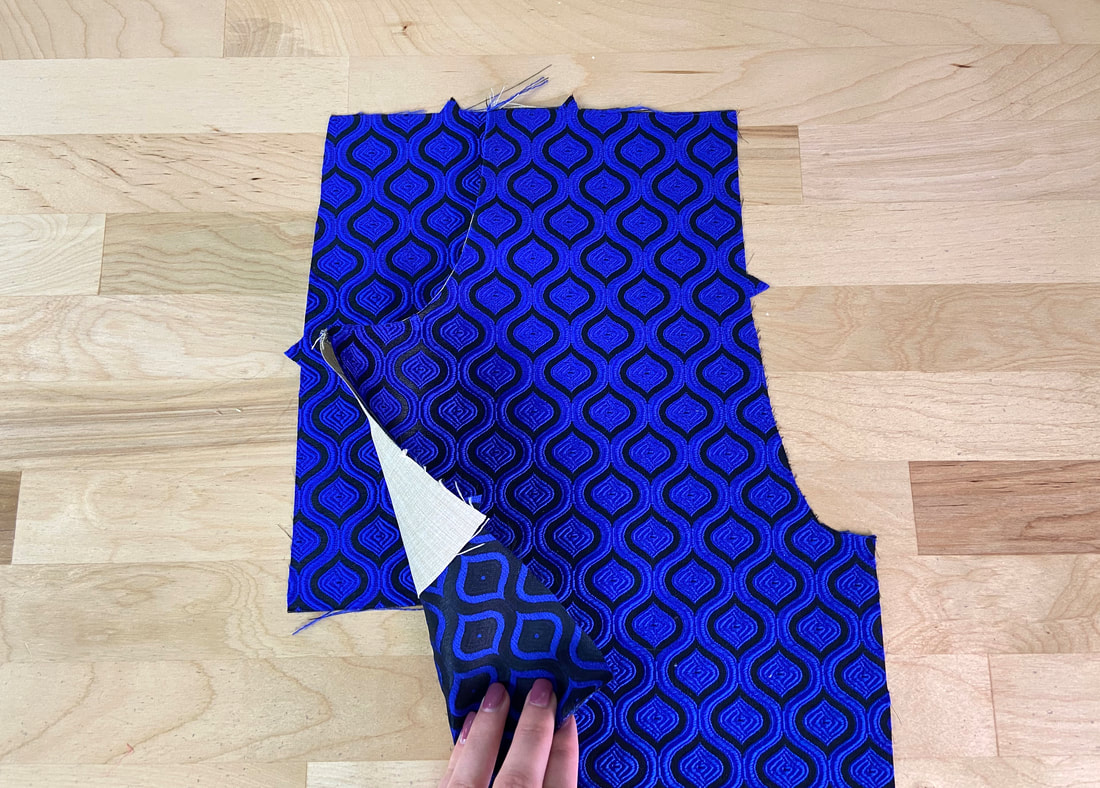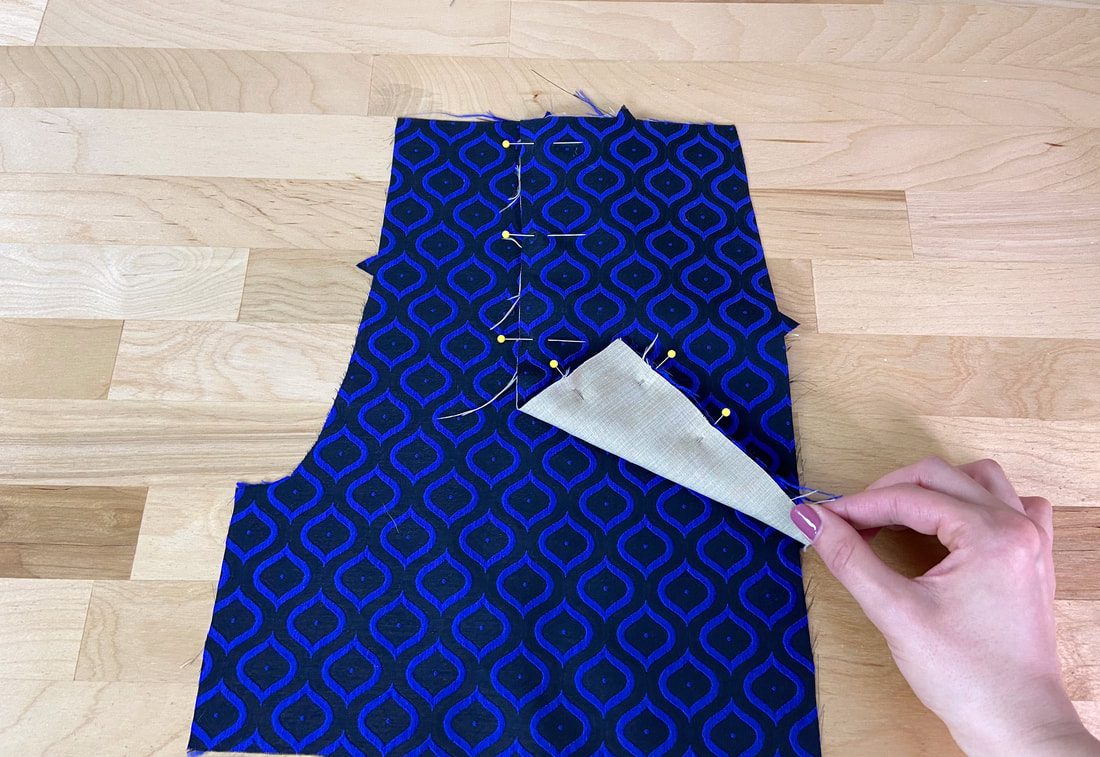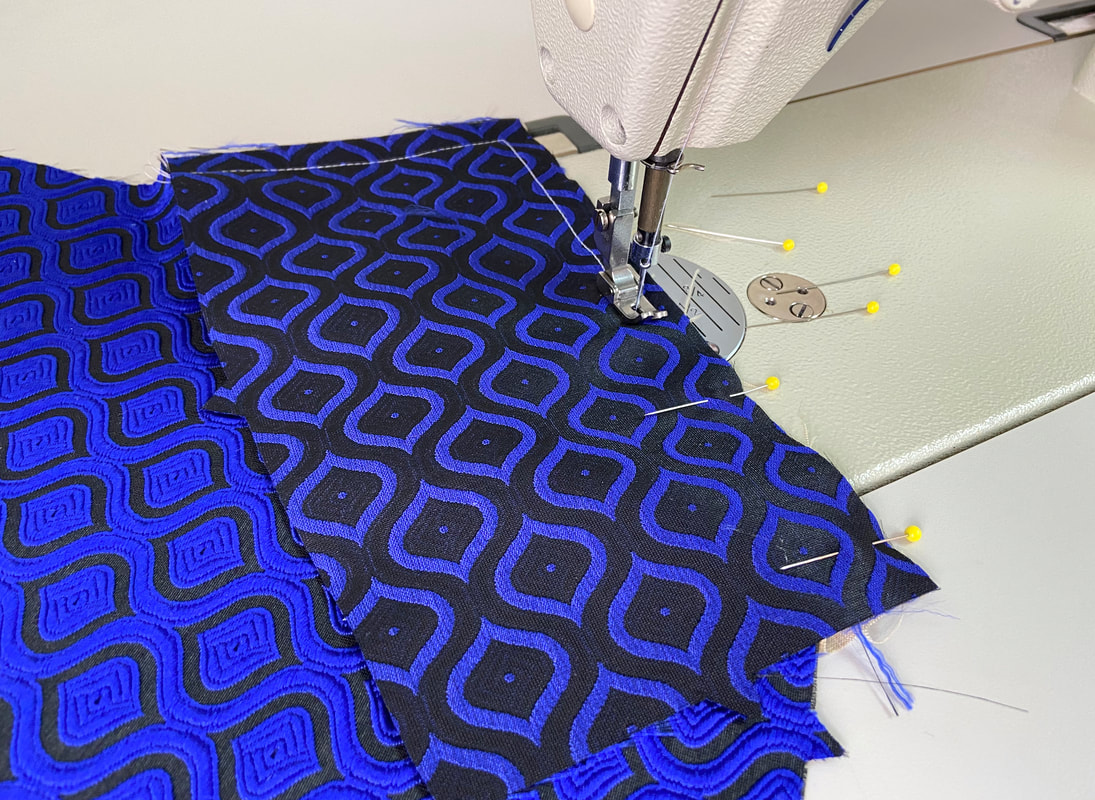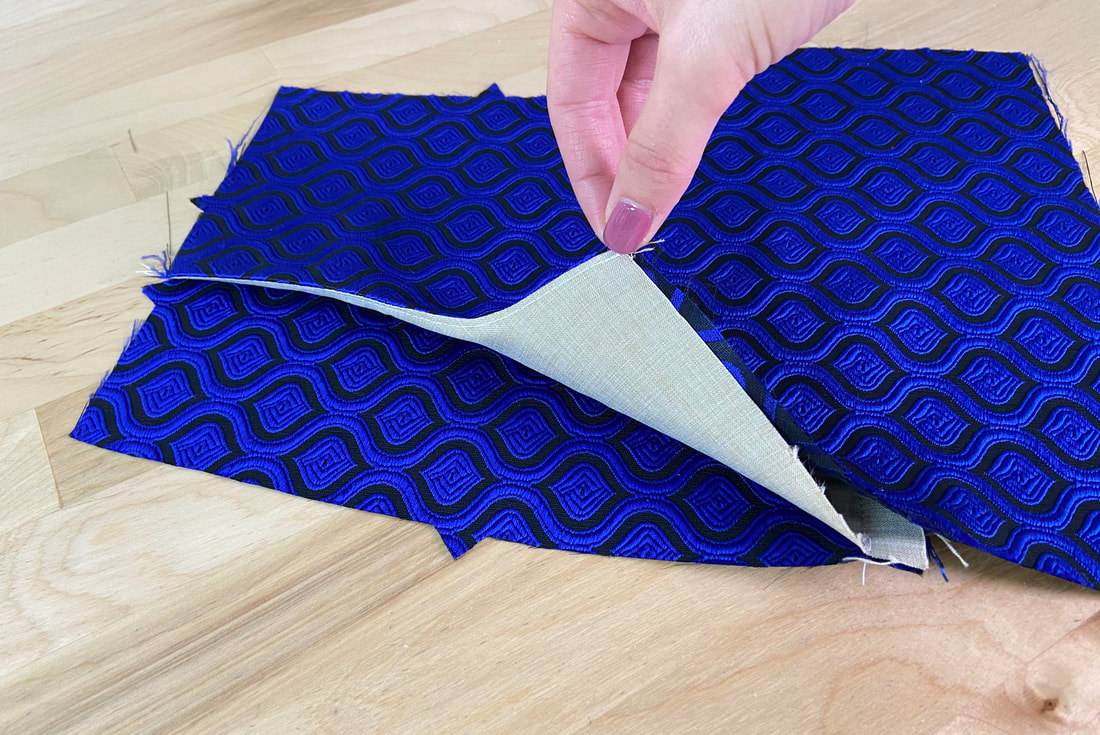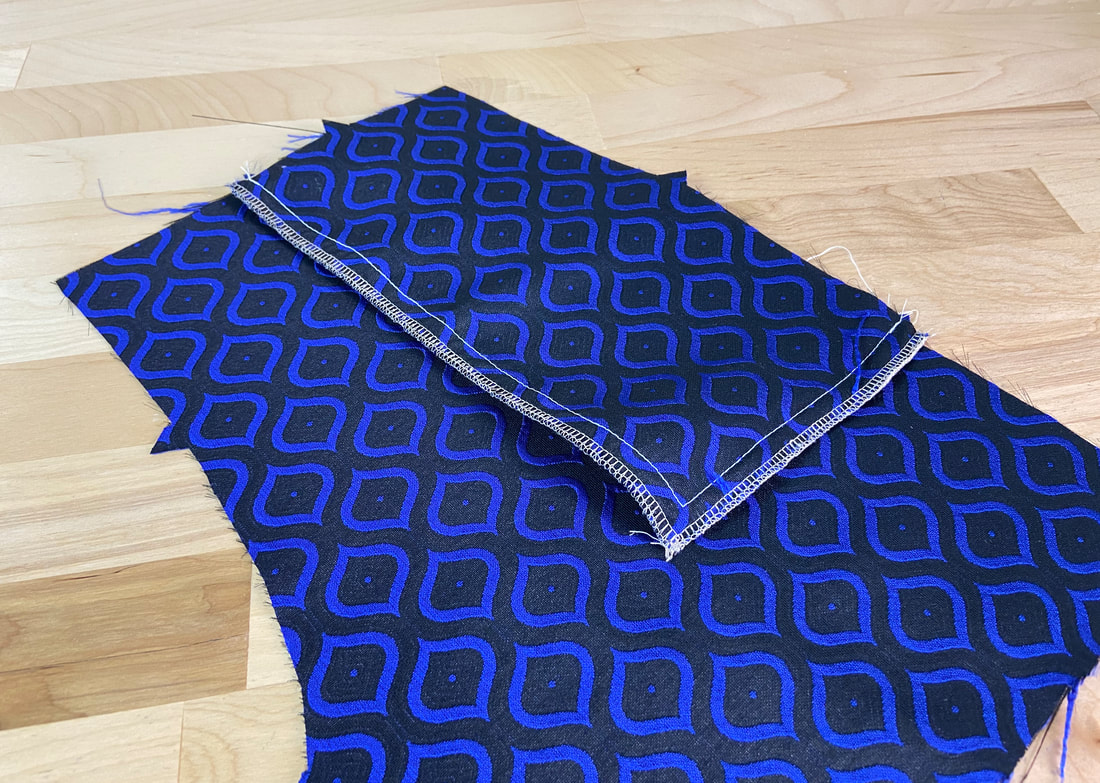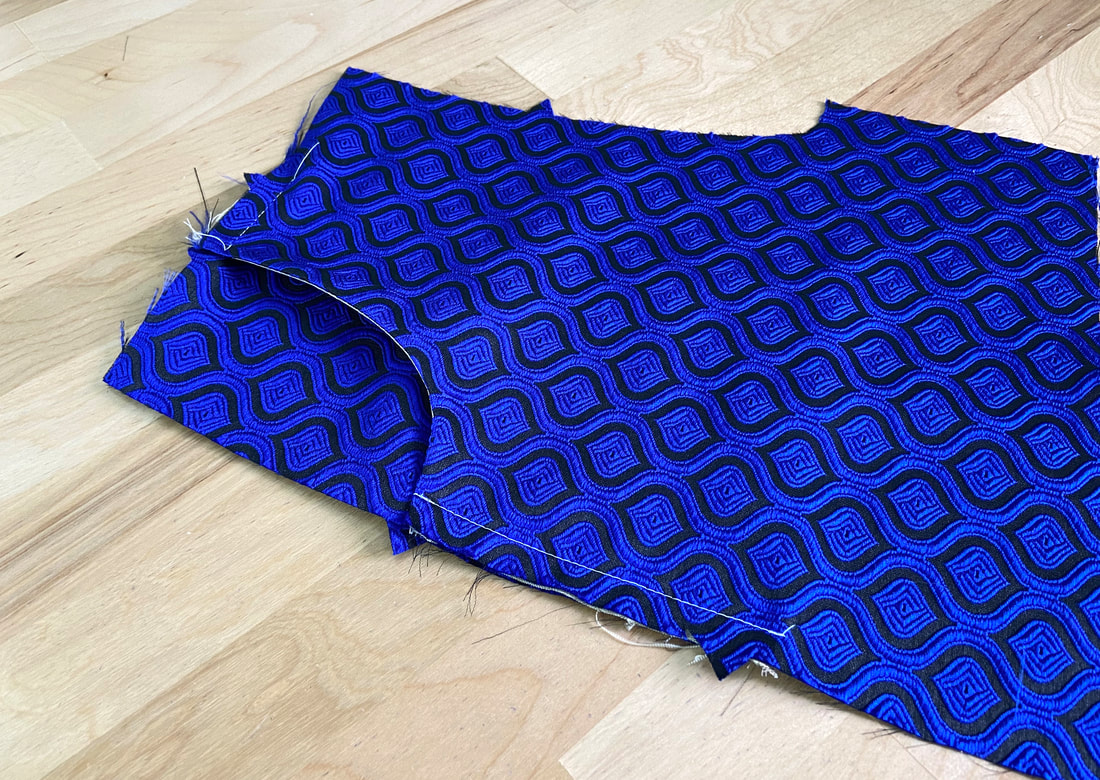Mini Tutorial: How To Sew Front Hip Pockets
To sew a front-hip pocket application, you have to first, identify and understand the pocket's sewing patterns.
You should have at least two (2) patterns: A pocket piece which is visible on the garment's face side, and a facing which clean-finishes the pocket opening edge, and along with the pocket piece, completes the pocket bag.
The garment area housing the front-hip pocket should have a cutout edge the same shape as the pocket's opening edge and identical to that of the pocket facing edge (inner curved edges pictured above).
You should have at least two (2) patterns: A pocket piece which is visible on the garment's face side, and a facing which clean-finishes the pocket opening edge, and along with the pocket piece, completes the pocket bag.
The garment area housing the front-hip pocket should have a cutout edge the same shape as the pocket's opening edge and identical to that of the pocket facing edge (inner curved edges pictured above).
1. Start by cutting your pocket components.
The pocket layer is conventionally cut from the same fabric as the garment while the facing can be cut from a lighter fabric - this layer will be fully enclosed on the inside of the pocket.
It is important to transfer all sewing notches and any other corresponding sewing marks from the patterns onto all fabric layers as they will facilitate aligning the pocket pieces in the sewing process. Naturally, if you are sewing two front-hip pockets, as is usually the case, cut two of each pattern piece.
The pocket layer is conventionally cut from the same fabric as the garment while the facing can be cut from a lighter fabric - this layer will be fully enclosed on the inside of the pocket.
It is important to transfer all sewing notches and any other corresponding sewing marks from the patterns onto all fabric layers as they will facilitate aligning the pocket pieces in the sewing process. Naturally, if you are sewing two front-hip pockets, as is usually the case, cut two of each pattern piece.
2. It is essential that the pocket opening edge is backed with interfacing. This area will receive lots of strain and force during use.
If your pattern set does not include an interfacing pattern, use the garment's pocket opening edge to cut the interfacing portion. Make sure the interfacing's fusible side aligns with the garment's wrong side.
If your pattern set does not include an interfacing pattern, use the garment's pocket opening edge to cut the interfacing portion. Make sure the interfacing's fusible side aligns with the garment's wrong side.
3. Cut the interfacing's curved edges such that it fits evenly along the curved pocket opening, and fuse it to the back of the garment as shown.
4. From the garment's right side, align the facing's curved (pocket opening) edge to that on the garment with fabric face side touching. Insert pins perpendicular to the edges to secure the two layers.
5. Stitch the two layers together at the designated seam allowance- 1/2" in this case.
6. To release tension in the curved edge and minimize bulk, trim the seam allowance down to 1/4" and cut wedge notches into the curved-most portion of the seam.
7. Iron the seam with the facing and all seam allowance layers (underneath) directed away from the garment.
8. Topstitch the facing and all seam allowances (underneath) next to the seamline as pictured above.
This topstitch is called understitching and its role is not only to further stabilize the pocket opening edge but to also keep the facing layer flatly enclosed on the inside of the pocket. The latter prevents it from rolling outwards along the finished curved edge.
9. Bring the facing to the wrong side of the garment and iron the resulting clean-finished curved edge.
10. Place the finished faced edge on top of the pocket piece such that the ends of the curved edge align with the marked notches on the pocket piece. The facing's bottom edges should align with those of the pocket piece thus creating the pocket bag. During the alignment process, place both components with right sides facing up as shown above.
11. From the wrong side of the application, insert pins perpendicularly through the pocket bag edges to secure the two layers for stitching.
12. Machine stitch the pocket bag edges together being careful not to catch any of the garment's layer underneath. It helps to extend the two pocket bag pieces away form the garment during this process.
Once the pocket bag is complete, the garment's side seam edge and top horizontal edges should fall into place naturally when the pocket bag is laid flat.
13. Before completing the rest of the garment, clean-finish the pocket bag edges with a serging or zigzag stitch (or any other finish of your choice).
14. For a bit more comfort during the rest of the garment's construction process, it helps to stitch the side seam layers together (pocket bag and garment). Doing so will ensure that the final seam is easier to align and work with in the steps to follow.

